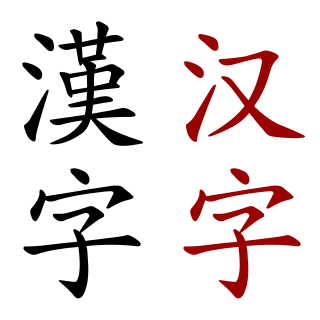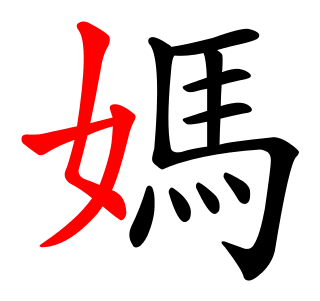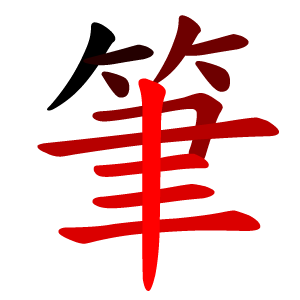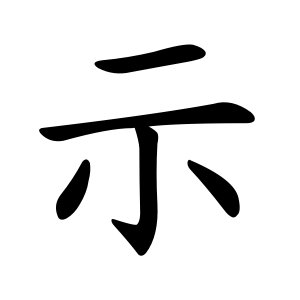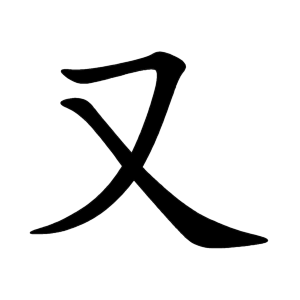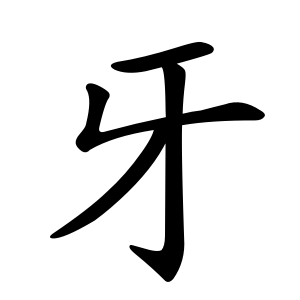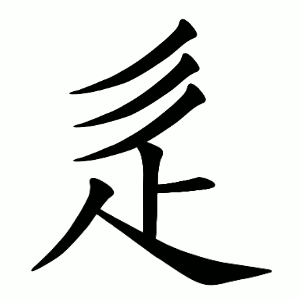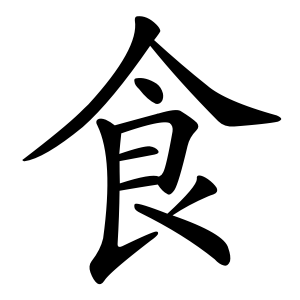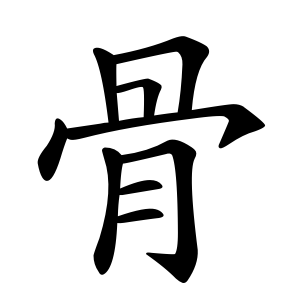The six radicals that occur the most frequently [2] (in order of frequency) [3] and make up 25% of the 2136 Jōyō kanji:
mouth, opening (not to be confused with box radical 囗) Kun: くち On: コウ、 ク
water Kun: みず、 みず- On: スイ
tree Kun: き、 こ- On: ボク、 モク
person, human Kun: ひと、 -り、 -と On: ジン、 ニン
hand Kun: て、 て-、 -て、 た- On: シュ、 ズ
heart radical, spirit, mind Kun: こころ、 -ごころ On: シン
| Fourteen radicals that together with the above make up 50% of Jōyō kanji:
word, say, speech / to speak Kun: い.う、 こと On: ゲン、 ゴン
sun, day, Sunday, time, counter for days Kun: ひ、 -び、 -か On: ニチ、 ジツ
silk/thread Kun: いと On: シ
(a variant of ⽷) short thread radical Kun: ちいさい On: ヨウ
meat/organ, flesh Kun: しし On: ニク
moon, month, Monday, period, counter for months Kun: つき On: ゲツ、 ガツ
ground, soil, earth, ground, Turkey Kun: つち On: ド、 ト
(a variant of ⾡) go/road radical, walk, to advance
grass/plant radical
- 宀 (屋根/やね, ウ/ウ冠/うかんむり) (3 strokes)
roof/crown radical, roof (house), shaped crown On: ベン、 メン
shell, property, wealth Kun: かい On: バイ
woman / female Kun: おんな、 め On: ジョ、 ニョ、 ニョウ
- 阝 (⻖/阜/こざと) (⻏/邑/おおざと) (3 strokes)
wall/hill/village radical (left side) large village radical (right side) place, left village radical, country, city Kun: こざと
gold/metal, mineral Kun: かね、 かな-、 -がね On: キン、 コン、 ゴン | Thirty-one radicals that together with the above make up 75% of Jōyō kanji:
one Kun: ひと-、 ひと.つ On: イチ、 イツ
- 刀/刂 (かたな, トウ) (2 strokes)
knife, sword Kun: かたな、 そり On: トウ Variants: 刂 (つくり) right side of the kanji
ten, complete Kun: とお、 と、 そ On: ジュウ、 ジッ、 ジュッ
rice field / rice paddy Kun: た On: デン Variants: 田 (へん) left side of the kanji
fire Kun: ひ、 -び、 ほ- On: カ Variants: 火 (へん), 灬 (あし) left side of the kanji, bottom of the kanji
big, very Kun: おお-、 おお.きい、 -おお.いに On: ダイ、 タイ
mountain Kun: やま On: サン、 セン Variants: 山 (へん), かんむり left side of the kanji, top of kanji
eat, food, to eat Kun: く.う、 く.らう、 た.べる、 は.む On: ショク、 ジキ Variants: 食=飠 (へん) left side of the kanji
vehicle, cart, car, wheel Kun: くるま On: シャ Variants: 車 (へん) left side of the kanji
walking/going person radical , stop, linger, loiter, ,step, stride, street, to go Kun: たたず.む On: テキ Variants: 彳 (へん), ⾏ (かまえ) left side of the kanji, enclose the kanji
eye radical, class, look, insight, experience, care favor Kun: め、 -め、 ま- On: モク、 ボク Variants: 目 (へん), 目 (かんむり), left side of the kanji, top of kanji
rain Kun: あめ、 あま-、 -さめ On: ウ Variants: 雨 (かんむり) top of kanji
- 犬 / 犭 (いぬ, ケン) (4/3 strokes)
dog Kun: いぬ、 いぬ- On: ケン Variants: 犭 (へん) left side of the kanji
king radical, rule, magnate On: オウ、 -ノウ
ball, jewel / jewelry Kun: たま、 たま-、 -だま On: ギョク
stone Kun: いし On: セキ、 シャク、 コク Variants: 石 (へん) left side of the kanji
power radical, strength, strong, strain, bear up, exert Kun: ちから On: リョク、 リキ、 リイ
garment, clothing / clothes, dressing Kun: ころも、 きぬ、 -ぎ On: イ、 エ Variants: 石=衤(へん) left side of the kanji
bow ( in archery, violin ) Kun: ゆみ On: キュウ Variants: 弓(へん) left side of the kanji
bamboo Kun: たけ On: チク Variants: ⺮ (かんむり) on the top of kanji
again, right hand, on the other hand Kun: また、 また-、 また.の- On: ユウ
action radical, folding chair radical, strike, activity, to strike, hit On: ホク Variants: ⽁ (つくり), 攵 (つくり) on the right side of the kanji
winter radical, to follow, late, delayed Kun: しゅう On: チ
show on an altar radical, altar, festival, religious service, indicate, point out, express, display Kun: しめ.す On: ジ、 シ Variants: 示=礻 (へん) the left side of the kanji
bird radical, wine / alcohol, sake jar, bird, west, sign of the bird, 5-7PM, tenth sign of Chinese zodiac Kun: とり On: ユウ Variants: 酉 (へん) left side of the kanji
(not to be confused with mouth radical 口) box, or enclosure radical On: イ、 コク Variants: 囗 = (かまえ) enclose the kanji grain radical, two-branch tree radical Kun: いね On: カ Variants: 禾 = (へん) left side of the kanji
building / house on a cliff radical, slanting roof On: ゲン Variants: 广 = (たれ) Radicals which "hang down"
sickness radical / trailing sickness radical Kun: や.む On: ダク、 ニャク、 ソウ、 ジョウ、 シツ Variants: 疒 = (たれ) Radicals which "hang down"
cloth radical, towel, hanging scroll, width, Kun: おお.い、 ちきり、 きれ On: キン、 フク Variants: 巾 (へん) left side of the kanji
flag, corpse radical, remains Kun: かたしろ On: シ Variants: 尸 = (たれ) Radicals which "hang down"
inch (2.25 cm)/sundial, measurement, tenth of a shaku, a little, small degree radical On: スン Variants: 寸 (つくり) on the right side of the kanji
|

